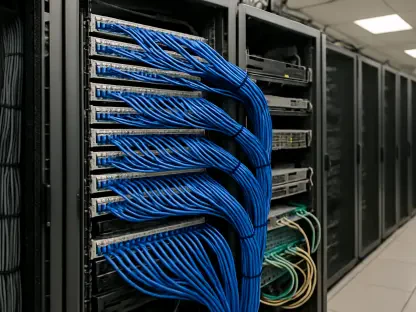As technological advancements continue to redefine the landscape of software development, Linux containers are poised for significant transformations by 2025, largely driven by the integration of artificial intelligence (AI) and serverless computing. The widespread adoption of these technologies promises to make software development more efficient, scalable, and accessible than ever before. Specifically, RedHat’s innovative RamaLama project exemplifies the future of AI development with Linux containers. This project simplifies the integration and utilization of AI by leveraging OCI containers. It streamlines the AI implementation process by automatically detecting GPU or CPU support and downloading the necessary AI model images using container engines like Podman or Docker. This level of automation and integration sets the stage for a seamless AI development experience.
AI-Enhanced Containers: The Future of Linux Containers
AI and machine learning (ML) technologies are expected to play a vital role in transforming Linux containers by 2025. Projects like RedHat’s RamaLama are at the forefront of this transformation, providing tools that simplify AI and ML deployment within containerized environments. RamaLama supports frameworks such as llama.cpp and vLLM, facilitating the execution of container models and contributing to the ongoing trend of making AI implementation more accessible and streamlined. By utilizing these AI-enhanced containers, developers can easily create sophisticated machine learning models and integrate them into larger applications without needing to manage complex configurations manually. As AI technology continues to evolve, we can expect even more sophisticated tools that further ease AI model development and deployment, ultimately bringing cutting-edge AI capabilities to a broader audience.
The fusion of containers with AI not only aids in development but also in the operational aspects of AI workloads. Implementing AI within Linux containers helps to optimize resource allocation, ensuring that processing power is effectively utilized across CPUs and GPUs. Moreover, using standardized container practices maintains consistency, reliability, and security across diverse deployment environments. This convergence of technologies ensures that as AI workloads grow increasingly complex, their management within containerized solutions remains efficient and scalable, making it a central aspect of future software development.
Expanding Horizons: Serverless Computing, Edge Computing, and WASM
In addition to AI, the future of Linux containers is significantly bolstered by the rise of serverless computing, edge computing, and WebAssembly (WASM) platforms. These technologies represent a natural evolution toward more lightweight, scalable, and portable solutions. Serverless computing, for instance, allows developers to run code without having to manage the underlying server infrastructure, leading to more efficient resource utilization and reduced complexity. By combining serverless architecture with containers, organizations can achieve greater flexibility while maintaining the ability to customize and control their applications.
Edge computing also plays a crucial role in the future of Linux containers. As data processing moves closer to the source, containers become instrumental in deploying applications across distributed environments efficiently. This proximity enhances performance and reduces latency, which is critical for real-time applications like IoT devices and autonomous systems. WASM further complements this evolution by enabling containers to run code in a lightweight and high-performance environment. This capability is particularly beneficial for edge computing scenarios where resources are limited, but processing power is needed.
Standardization and Cloud Platforms: A Unified Future
The future of Linux containers is significantly bolstered by emerging technologies like AI, serverless computing, edge computing, and WebAssembly (WASM) platforms. These innovations mark a shift towards more efficient, scalable, and portable solutions. For example, serverless computing enables developers to execute code without managing the server infrastructure, optimizing resource use and reducing complexity. Combining serverless architecture with containers provides organizations with greater flexibility while retaining control and customization of their applications.
Edge computing is also vital for the future of Linux containers. As data processing shifts closer to the source, containers become essential for deploying applications across distributed environments effectively. This improves performance and reduces latency, crucial for real-time applications such as IoT devices and autonomous systems. Meanwhile, WASM enhances this evolution by allowing containers to run code in a lightweight, high-performance environment. This is particularly advantageous for edge computing, where resources may be limited but robust processing power is necessary.









